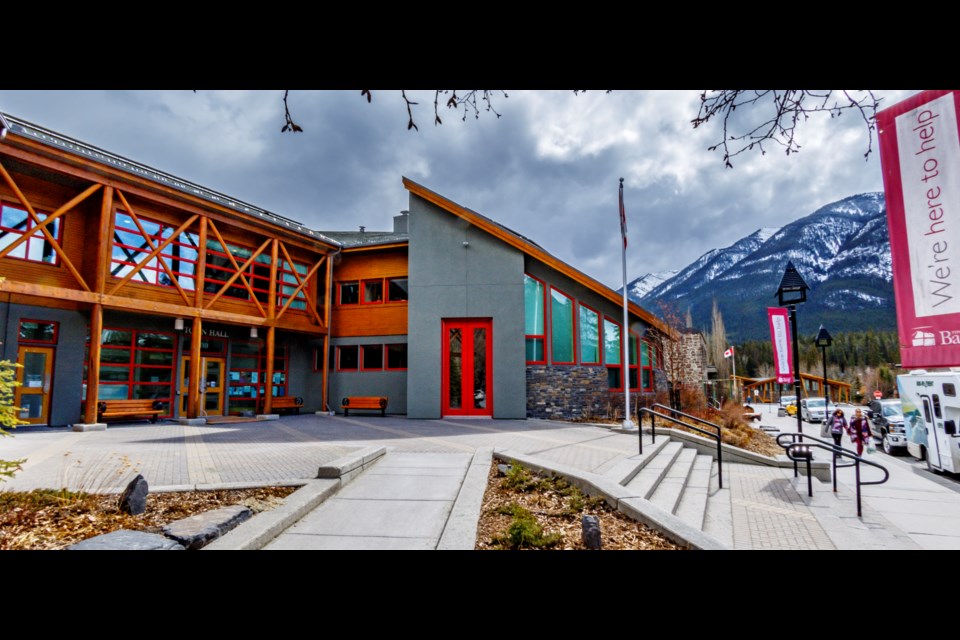BANFF – The Town of Banff is embarking on a comprehensive three-part study intended to equip the municipality with the tools to ensure every person working in the mountain community has access to affordable and appropriate accommodation.
The housing ratio study takes aim at the Town’s housing policy to gauge housing needs based on various businesses’ employee counts. The first step involves collaboration with local businesses and organizations to understand the policy’s current impact on housing needs.
“I think we need to understand the effectiveness of our current situation before we can begin to improve it,” said Banff Mayor Corrie DiManno at council Monday (Oct. 13). “We have to know how we’re doing; we have to know where the gaps are, we need to establish that type of information before we can move forward.
“I think we’re just firing every barrel with housing right now, so it makes sense in my mind to also be focused on this piece.”
Banff’s housing policy, introduced in 1991, sets ratios for required housing associated with various commercial activities, aligning with the workforce size produced by a particular business.
The housing policy and land use bylaw establish regulations for building housing in the community based on commercial floor area.
At a May governance and finance committee meeting, administration highlighted gaps in the bylaw’s requirements concerning aspects such as dividing and intensifying commercial floor space, and suggested council pursue a study to verify housing ratio requirements.
“I’ve had lots of conversations with folks around the intensification of use on sites and how that relates to the housing required, so I think folks are pretty keen to explore this topic further and to make sure that those housing ratios are reflective of today’s commercial uses,” said DiManno.
Town officials say the national park tourist town, which has a need-to-reside policy under Parks Canada, is short about 750 to 1,000 housing units and, as of June, had a 0.3 per cent vacancy rate.
Banff’s current housing policy mandates new commercial developments or changes intensifying existing commercial spaces in Banff must also allocate additional housing. Options to fulfill this housing requirement include constructing new housing units within or added to an existing building within Banff or paying a set cash-in-lieu rate per bedroom of $53,813 at the discretion of the development authority.
Cash-in-lieu payments for required housing are directed to the Banff Housing Corporation to address housing options in the community.
Since 2018, the cash-in-lieu rate has been linked to the construction price index for apartments in Calgary, rising from $21,000 in 2018 to $53,813 in 2023. However, Emma Sanborn, a development planner for the Town of Banff, indicated in an earlier council meeting the increase is still insufficient for actual building costs in Banff.
Planning the housing ratio study involved collaborating with an external consultant and local HR experts, which suggested the Town examine strategies used by other municipalities facing similar housing challenges, as well as innovate new methods for assessing workforce housing needs.
The study is an extension of Banff’s housing action plan, which also looks at changes to parking requirements, setback requirements, height allowances and site coverage, among others, to facilitate building more housing.
The first phase of the study, which requires reaching out to local businesses, will cost the Town $35,000. For this, council voted to approve funding from the municipality’s cash-in-lieu housing reserve. Coun. Ted Christensen was solely opposed to the move.
Coun. Hugh Pettigrew voiced support for the study but also questioned how council would replenish the reserve, noting its $111,463 balance is depleting.
DiManno noted the reserve will continue to rely on developers providing cash-in-lieu if unable to build housing due to capital, timing or other constraints.
She also said the Town recently approved $100,000 from the reserve, which is not funded by general municipal taxes, to get a jump on some initiatives should the municipality be successful with its federal Housing Accelerator Fund application.
“If we are successful with the housing accelerator application that money would be put back into the cash-in-lieu reserve,” she said.
Exploring ways to fast-track development applications, which could include e-permitting, and looking at financial tools to drive construction of more housing such as property tax strategies, is also part of the Town’s action plan – required to tap into the $4 billion federal housing fund.
At a governance and finance committee meeting earlier in the day, committee members voiced support for bringing forward service level requests to create two fixed, two-year term positions – one for I.T. and another for a contract development planner – to help fast track residential development permits and maximize the housing accelerator’s potential, should the Town’s application be successful.
A presentation on housing-related financial tactics also briefly reviewed commercial sector housing levies and direction from governance and finance to look at a yearly fee associated with a contribution to a housing reserve and qualifications for a fee exemption based on building housing in the community. A report on this is expected later in November.
Findings from the first phase of the housing ratio study are expected in about six months, noting the Town needs to issue a request for proposal (RFP) and then select a consultant to engage with local businesses and organizations community-wide.
The Local Journalism Initiative is funded by the Government of Canada. The position covers Îyârhe (Stoney) Nakoda First Nation and Kananaskis Country.




